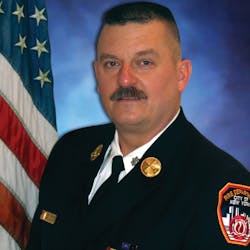Most of us have heard of or met firefighters who rotate from unit to unit within their department as a matter of routine. The same goes for others who aren’t rotated by their department but instead are transferred elsewhere following their own request. There are other methods, too, of moving people around. In any case, there are positives and negatives.
Staying put
Let’s first look at the department where a firefighter graduates recruit school and is assigned to a unit, such as an engine or a ladder company, and remains there. If this member has no plans to get promoted and move up the ranks, he/she will be found in that unit 10 years later. What’s good about that? We have a relatively senior firefighter who certainly should know company policy, tactical assignments, and all of the tools and equipment that are on the company apparatus. Additionally, the member is very familiar with the firefighters who are on his/her shift and even on the other shifts. Does the member know the streets and addresses and target hazards in his/her response area? You bet.
Spending time/lots of time/years in a single unit makes both firefighters and company officers very familiar with all of the important things that make them better firefighters. A senior firefighter almost always is the one who is selected to help break in the newest members, and, often, they can be helpful with some personnel issues.
On the move
What about the fire department that rotates its members from unit to unit—engine to ladder, residential neighborhood to high-rise district, etc.— every two years? Any benefits there? Sure. A firefighter who works in such a department and who has 10 years of experience can have been assigned to five different units in five different areas. The member has experience in high-rise firefighting as well as private dwelling tactics. He/she has stretched hose while assigned to an engine and learned how to force doors and cut roofs while working in a ladder company.
This wide range of experience has value, but it comes at a cost. This firefighter might have a wider field of experience, but his/her depth of knowledge certainly is shallower. Also, during the five transfers, the firefighter repeatedly is the “new” member of the crew, and the learning process must begin again with each transfer. After 24 months, the member might start to even get a handle on the work that he/she is doing, only to be once again shifted to yet another unit in another neighborhood. Yes, over an entire career of 20–25 years, such a member is more well-rounded than many others are, but is that better than 25 years in the same unit where he/she practically is an “expert”?
Here’s another variation: Several years ago, the FDNY started a program in which probies were assigned to a unit—for example, an engine in Harlem—where they would work for one year. After that year, they were moved to another unit, a ladder company, in a different type of neighborhood. A year later, this was repeated again into another unit. After the third year, they returned to the first unit as their permanent assignment. Of note about the various units: Every FDNY company was grouped into a category that was based on its number of runs. A company either was an A or a B or a C company. When the firefighters were moved around each year, they also were assigned to each of the three company categories. So, after the three-year tour, a new firefighter would have worked in three companies in areas where three different types of buildings and occupancies exist, and they would have worked in both engine and ladder companies.
Some of the rotating members returned to and stayed at their original unit. Some others found one of the other assignments more interesting and requested transfers to those units. Others found the different types of buildings more interesting and transferred into another unit in that area.
So, as you can see, there are advantages and disadvantages to both policies. Furthermore, smaller departments have different priorities than large urban departments, and the variables are many.
About the Author
John J. Salka Jr.
Battalion Chief
JOHN J. SALKA JR., who is a Firehouse contributing editor, retired as a battalion chief with FDNY, serving as commander of the 18th battalion in the Bronx. Salka has instructed at several FDNY training programs, including the department’s Probationary Firefighters School, Captains Management Program and Battalion Chiefs Command Course. He conducts training programs at national and local conferences and has been recognized for his firefighter survival course, “Get Out Alive.” Salka co-authored the FDNY Engine Company Operations manual and wrote the book "First In, Last Out–Leadership Lessons From the New York Fire Department." He also operates Fire Command Training, which is a New York-based fire service training and consulting firm.

